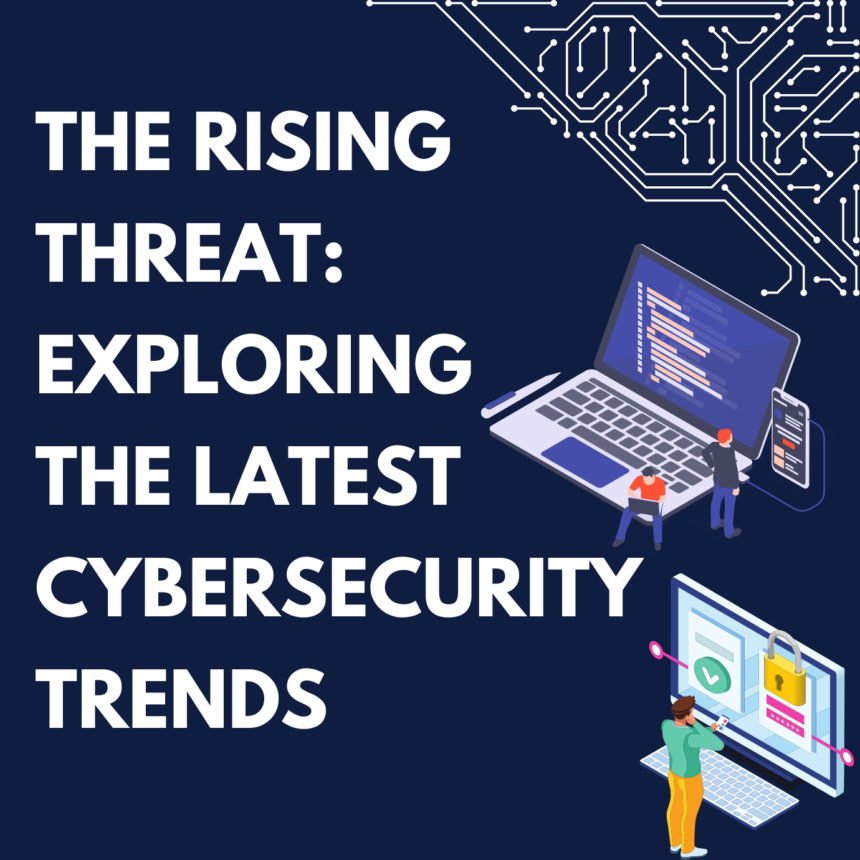As technology advances, so do cyber threats. The digital landscape is constantly evolving, presenting new challenges for cybersecurity professionals and individuals alike. Understanding the latest cybersecurity trends is crucial to staying ahead of potential threats and safeguarding sensitive information. Let’s explore some of the rising cybersecurity trends:
- Ransomware Attacks on the Rise: Ransomware attacks have become more sophisticated and prevalent. Cybercriminals use malicious software to encrypt valuable data, demanding a ransom for its release. Organizations and individuals must implement robust backup strategies and security measures to defend against ransomware.
- Internet of Things (IoT) Vulnerabilities: The increasing adoption of IoT devices presents new security challenges. Many IoT devices have weak security protocols, making them vulnerable to attacks. As these devices become more integrated into daily life, securing IoT networks becomes essential to protect user data and privacy.
- Cloud Security Concerns: With the widespread use of cloud services, ensuring cloud security is paramount. Misconfigurations and weak access controls can lead to data breaches. Properly configuring cloud environments and encrypting sensitive data are critical practices.
- Phishing Evolves with Social Engineering: Phishing attacks have evolved beyond traditional emails. Cybercriminals now use sophisticated social engineering techniques, including voice phishing (vishing) and SMS phishing (smishing), to trick users into revealing sensitive information.
- AI-Driven Cyberattacks: Cyber attackers are leveraging artificial intelligence and machine learning to enhance their attacks. AI-powered malware can adapt its behavior to evade traditional security measures, making AI-driven cybersecurity solutions crucial to defend against such threats.
- Mobile Device Exploitation: As mobile device usage increases, so does the risk of mobile-based attacks. Malicious apps, SMS attacks, and mobile phishing are growing concerns. Implementing mobile security measures, such as app vetting and strong authentication, is essential.
- Supply Chain Attacks: Cybercriminals target the supply chains of companies to gain access to sensitive data or infiltrate networks indirectly. Strengthening supply chain security and vetting third-party vendors are becoming critical aspects of cybersecurity.
- Zero-Day Vulnerabilities: Zero-day vulnerabilities are previously unknown software flaws exploited by hackers before developers can release patches. Detecting and mitigating these vulnerabilities requires continuous monitoring and threat intelligence.
- Cybersecurity Workforce Shortage: There is a growing shortage of skilled cybersecurity professionals to meet the increasing demand for robust security measures. Investing in cybersecurity education and training is vital to build a capable workforce.
- Nation-State Cyber Warfare: State-sponsored cyberattacks continue to pose a significant threat to critical infrastructure, businesses, and government institutions. Developing strong cybersecurity policies and collaborating internationally to combat cyber warfare is essential.
To effectively address these rising cybersecurity trends, organizations and individuals must adopt a proactive approach. Regular security awareness training, continuous monitoring, timely software updates, and collaboration with cybersecurity experts can significantly enhance cyber defense capabilities.
